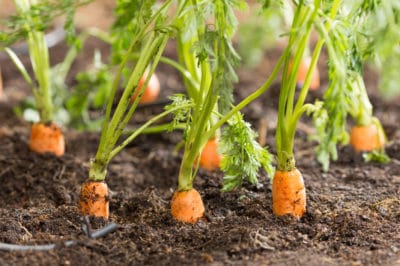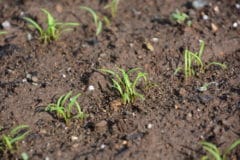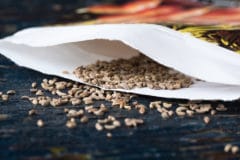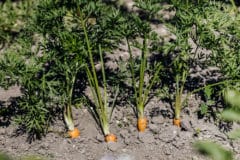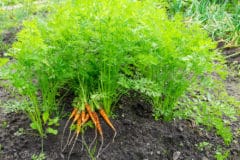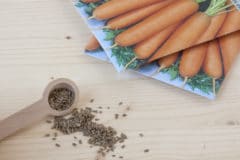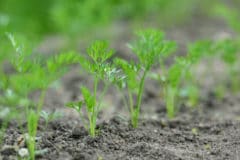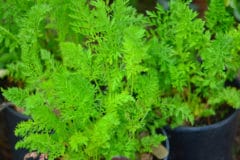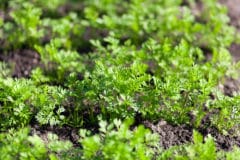Seeds and Starts
Your carrot seeds, once sown, will immediately begin to make their home in the ground. Well-tilled and kept moist, the soil will nurture your seeds to germination and beyond.
About three weeks after planting, your seeds will begin to put forth sprouts and roots. Once the process of germination is complete, you’ll thin your plants but, for now, they will continue to poke out of the dirt for the next few weeks. During this time, the only thing you need to do is water your garden regularly.
Sprouts and Thinning
When the plants are about four inches tall, you’ll thin them. Be careful of the surrounding plants. A carrot is actually the large taproot of a plant; small, hair-like roots will grow out from this main root and may intertwine with the small roots of nearby plants. Because of this, when you’re thinning carrots, you should be careful not to disturb other sprouts any more than necessary.
A month later, you’ll thin again. Loosening the soil around the plants you’re pulling will help to prevent damage to neighboring carrots.
Growing and Harvesting
As your carrots grow, they push their way into the earth. This is why tilling your soil well before sowing your garden is important; carrots won’t force their way through an impediment in the ground, they’ll either stop growing or bend around it. This can cause:
- Stunted carrots
- Carrots with rounded ends
- Forked carrots
- Misshapen carrots
- Carrots that fail to grow
After growing for about three months or so, your carrots will be ready to harvest. They’re likely eight inches deep, or more, in the earth, their smaller roots branching out to consume nutrients and water.
Storage in the Ground
You can also store your carrots in the ground until well into the winter. As the weather gets colder, your carrots will store more of their natural sugars in their roots instead of using it to continue growing greens and bigger carrots. This will cause your carrots to be sweeter and tastier after they’ve experienced a couple of frosts!
Wintering Over and Bolting
As your carrots remain in the dirt while the weather cools, changes will take place. That sugar they’re storing in the root will keep the plant strong over the winter, and prepare it to grow flowers and produce seed come spring.
The earth will keep the plant healthy and safe so that it can go to seed and then reproduce. Even as the ground freezes, the carrot is going dormant and surviving on its stores, and when the ground warms again, your plant will begin its reproductive process.
